Pink spireas: description, varieties, planting and care
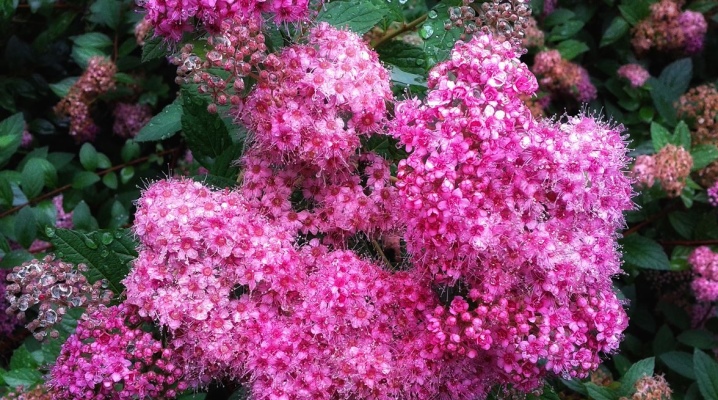
Pink spirea is an unpretentious, flowering culture with huge inflorescences, behind which the foliage of the bush is almost invisible. The plant is able to decorate any territory with interesting compositions and natural fences used for garden zoning.
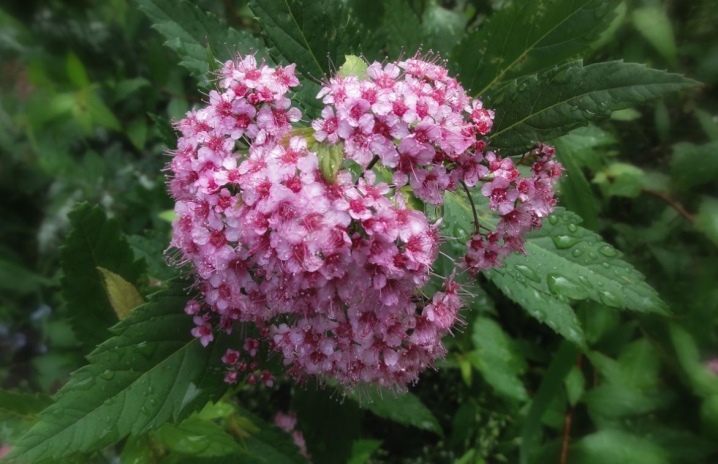
Types and their description
Spirea is an extremely common shrub plant, usually small. The culture has many varieties, each of which has its own characteristics of appearance, flowering time and other distinctive qualities. Gardeners are given an excellent opportunity to choose from a large number of interesting plants that can bring novelty to the landscape design of their suburban area.
- Willow look shrub grows 1.2-2 m in height, has straight branches growing vertically upward with narrow leaves. Inflorescences with pink flowers can reach a length of 12 cm. The flowering period is in July.
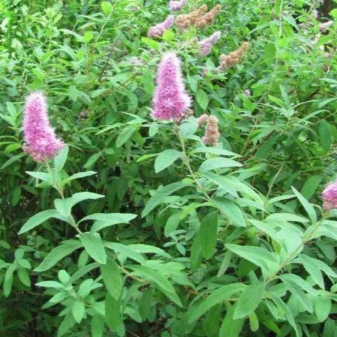
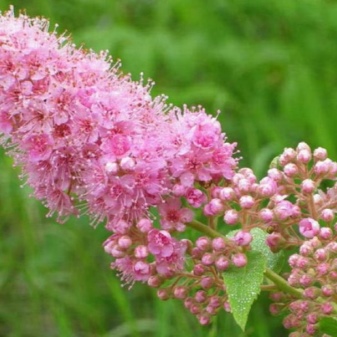
- "Arguta" - paniculate spirea, the crown of which resembles a cascade of arcuate branches covered with snow-white flowers. Shrub height - up to 2 m.
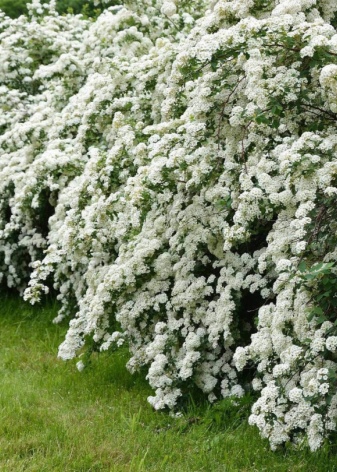
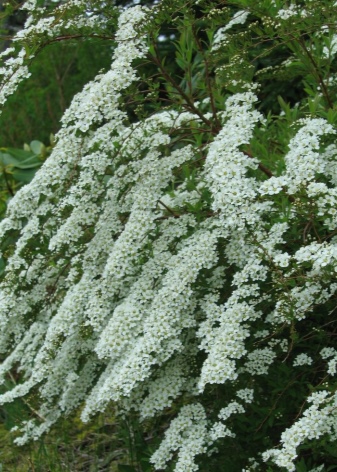
- Spirea called "Billard" inflorescences form at the ends of straight branches stretching towards the sun, has narrow brushes with pink flowers. The crown reaches a height of 2 m.
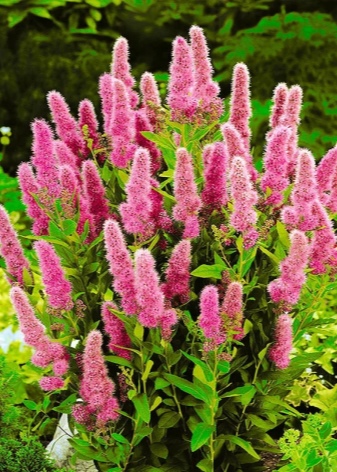
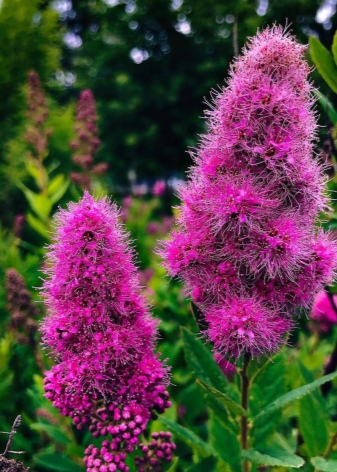
- Gray spirea it is distinguished by green foliage, the lower part of which is silvery. Complex inflorescences, consisting of shields, have white petals, look beautiful against the background of the reddish bark of the branches.

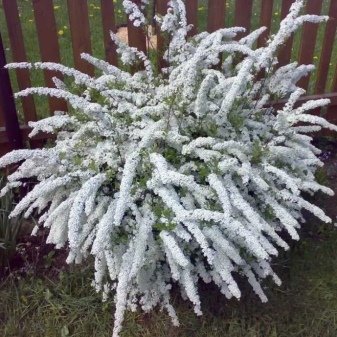
- Oak-leaved variety - a shrub, the average height of which is 1.5 m, its leaves are oval with a pointed tip, have jagged edges along the edges. Scutellum inflorescences are distinguished by white flowers.
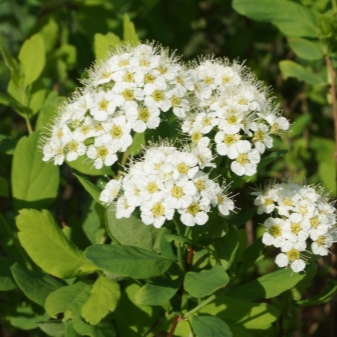
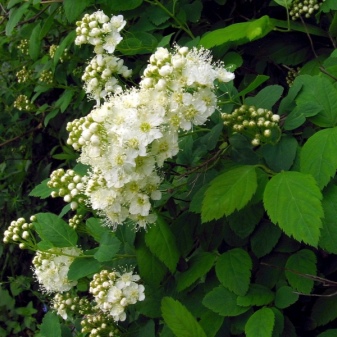
- Birch-leaved species grows in Siberian forests, blooms in May, blooms profusely with boiling white flowers for 30 days. It grows in height no more than 1.5 m.
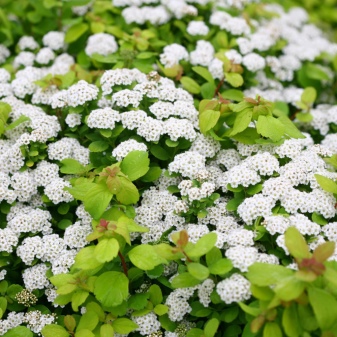
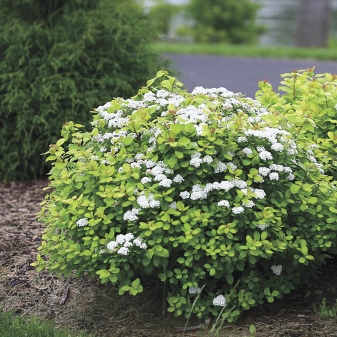
- Low crenate variety - meter shrub, has small rounded leaves and delicate white flowers, collected in caps.
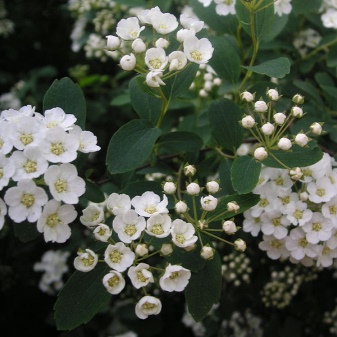

- Spirea is beautiful - a plant with snow-white flowers and the ability to bloom 2 times per season - at the beginning and at the end of summer. The first time the inflorescences open on mature branches, and at the end of summer - on young shoots.
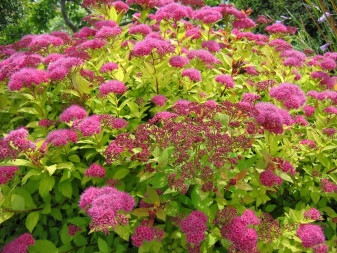
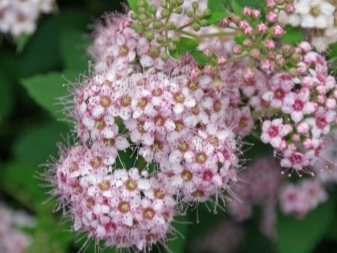
- Short view, obtained from crossing the white-flowered and Japanese spirea - "Bumalda", a miniature bush (height 80 cm), the color of the inflorescences of which varies from pink to deep burgundy.
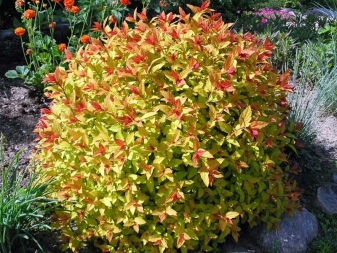
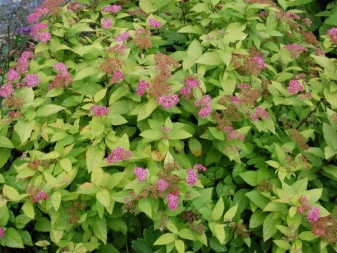
Any varieties of culture have a characteristic feature - their root system is devoid of the main root, therefore, adventitious, mainly lateral root processes, develop. This characteristic determines the location of the roots in the surface layer of the soil. Besides, flowers on different spirea shrubs also have common features: they are small, densely placed, forming different types of inflorescences - panicles, pyramids, umbrellas.

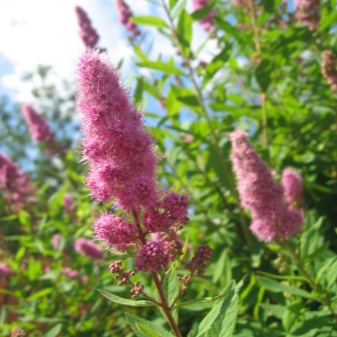
As for the color of the petals, it depends on the flowering time. Snow-white flowers are typical of species blooming in spring, autumn flowers are distinguished by a red palette of shades, pink spireas bloom in summer.
Unusual because of the triple color of the petals is the Japanese variety of culture, it does not grow above 1 m, it is not afraid of frosts, and its flowers can combine white, pink and cherry shades.Moreover, many popular varieties that differ in their originality of appearance originate from it.
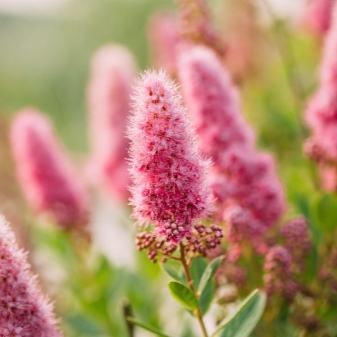

Popular varieties
Gardeners have appreciated different varieties of pink spirea, including artificially bred hybrids.
- One of the popular varieties of the spring type of culture "Wangutta" - "Pink Ice"... The plant is distinguished by a variegated color of leaves and beautiful cream-colored inflorescences. Basically, the culture is used as a tapeworm and for decorating green lawns.

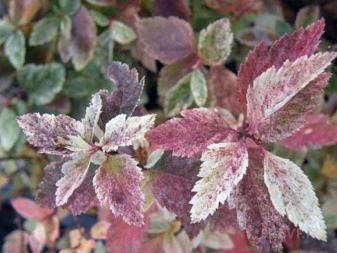
- The famous summer variety "Frutishana" - a dwarf shrub with a height of only 60 cm. Hemispherical caps of pink flowers are lush, due to airy stamens.
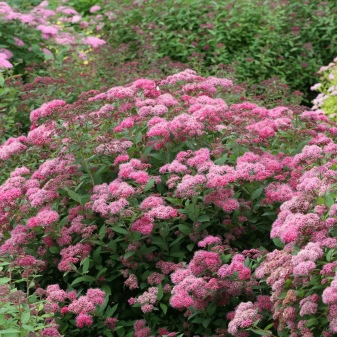

- Thunberg - a mountain shrub with graceful leaves and white flowers, the leaves can change color from green to orange. One of the spectacular varieties of this species is "Ogon", characterized by green foliage, covered with gold, as well as the famous "Fujino pink" - a plant with inflorescences of a pale pink tone on beautifully drooping branches.
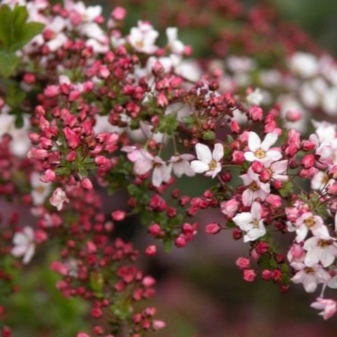
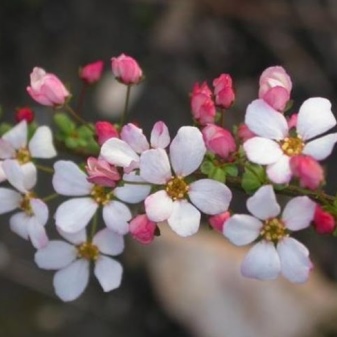
- "Sparkler" It is considered the first variety of birch-leaved spirea with a pink tint of petals. A small compact bush has a cushion-shaped crown and grows in height up to 50 cm with a circumference of the aboveground part of 60-80 cm. It is interesting that in autumn its green leaves turn red. Gardeners are also familiar with this variety because at the end of summer, even after cutting the inflorescences, it is able to bloom a second time. By the way, this is a frost-resistant plant that can calmly endure 30-degree frosts.
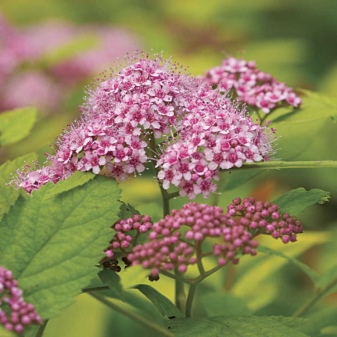
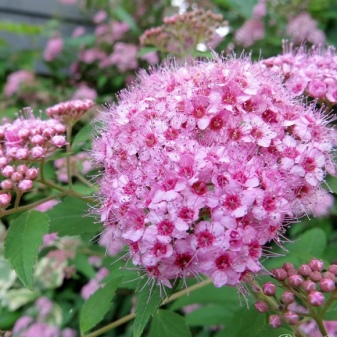
Many pink-colored varieties come from the Japanese spirea - these are "Little Princesses" with pinkish-burgundy petals, "Golden Princesses" with similar inflorescences and yellow leaves, "Goldflame" with leaves that become bright orange in autumn and inflorescences of small flowers in reddish and pink tones.
Planting and leaving
The best planting material is a container seedling that can be planted throughout the growing season. The plant needs fertile soil, it prefers sod and leafy soil with a neutral reaction or slightly acidic soil, in which it quickly develops and grows. Therefore, as a nutrient substrate for the hole, you can use simple garden soil, adding peat and sand to it. Sand compositions are enriched with a small amount of clay and mineral complex fertilizer "Aba".
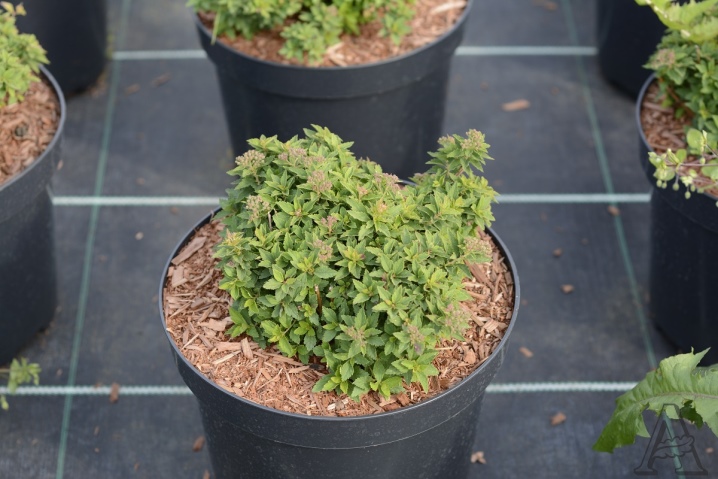
It is better to place the shrub in a place with moderate lighting, but not in the shade, where the bush will bloom poorly. The best neighbors of spirea are conifers: spruce, fir, juniper or thuja.
The process of planting a pink spirea has its own characteristics, and they are associated with the time the shrub is placed in the open field. Plants planted in springtime can bloom during the hottest period, so planting a crop, preferably before the foliage is fully blooming. Saplings with damaged, dried out roots are unlikely to adapt and take root. Soaking dry roots in cold water for 24 hours can sometimes help.
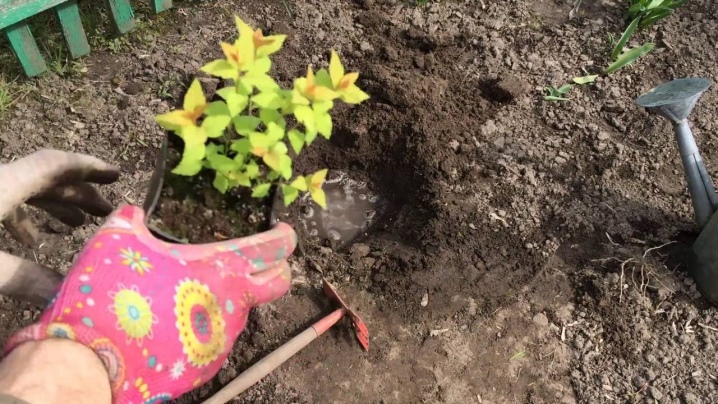
In autumn, meadowsweet is planted, or rather, planted when dividing adult bushes. For this, specimens that bloom continuously for 3 seasons in a row are suitable. In general, late types of pink spirea should be planted in autumn. The planting process consists of several stages:
- a planting pit is prepared in advance with a depth of 60-70 cm and is spacious enough for a branched root system;
- the bottom of the hole is covered with drainage material - broken brick, gravel or expanded clay, its layer should be about 20 cm;
- before planting, the roots are checked for rot, cleaned, shortened too long shoots;
- over the expanded clay, the prepared fertile mixture is poured in the form of an elevation;
- meadowsweet roots are lowered in the center onto a mound and straightened, then carefully fill the hole with earth, paying special attention to the voids;
- the root collar is located in line with the soil surface;
- the trunk circle is watered with a large amount of settled water (about 35 liters);
- complete the planting with mulching - the ground near the roots is covered with peat by 7 cm.
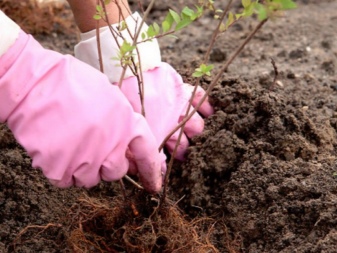
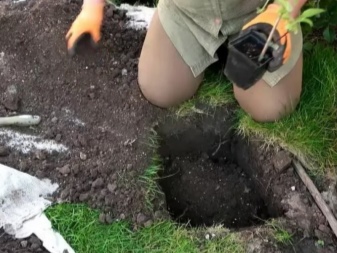

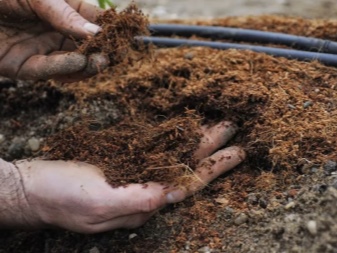
Further development of the plant depends on caring for it. Watering the plant, the roots of which are at a shallow depth, requires special attention. On hot summer days, the shrub must be watered when the soil surface dries up, adult plants need to be watered twice in 30 days. Carefully loosen the soil before irrigation and mulch afterwards to maintain moisture for a long time.
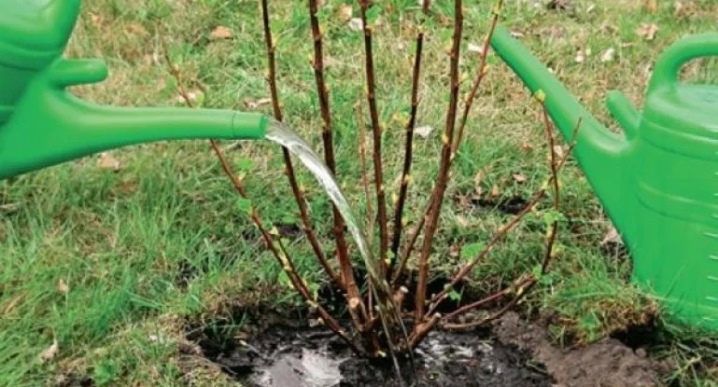
In mid-July, the plant needs to be fed with organic matter - rotted cow dung mixed with complex phosphorus fertilizer. Aphids and mites are the main enemies of the culture, therefore it is important to carry out preventive spraying with insecticidal agents. Such formulations do not harm the healthy branches of the spirea.
For pink spirea, periodic pruning is relevant, since the shrub is growing rapidly. In the spring, damaged shoots and frozen branch tips are cut off from the bush by 1/3. This procedure is combined with a decorative haircut, during which the crown is removed from thin branches and the symmetry of the aerial part is restored. In the fall, the branches are shortened to enhance flowering next year, once every 7 years, the shrub is completely thinned out for the purpose of rejuvenation.

How does it multiply?
Spirea is excellently propagated by layers and seeds, in addition, the plant can be divided when transplanted in the autumn. The easiest method is to retract the escape. Having chosen a young shrub at the age of 2 years, its lower healthy shoots are bent to the ground, laid in a small ditch 30 cm deep, sprinkled with soil and watered. The branch is secured with a hairpin or wire. During the season, it is necessary to carry out all the necessary agrotechnical procedures - watering, weeding, loosening and mulching of the trunk circle, including the soil under the cut. In the fall, the young spirea will give roots and can be transplanted.
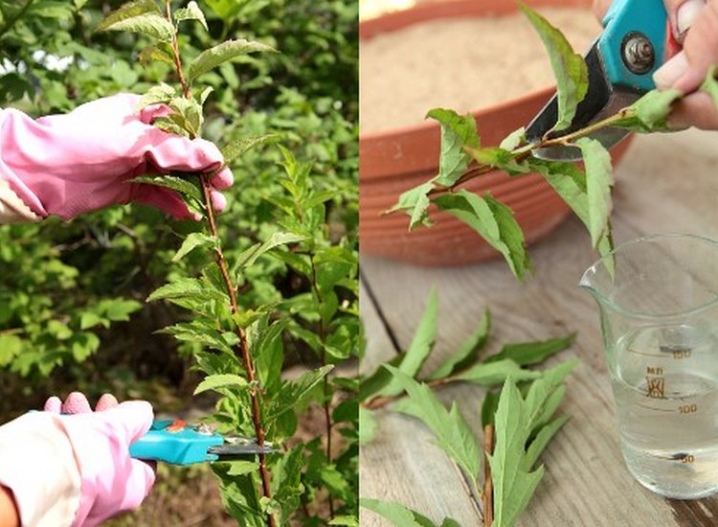
Propagation by cuttings is more suitable for experienced gardeners, as it is associated with constant care for future seedlings. Annual bushes are suitable for cutting branches. The cut branch is divided into several parts, each must have at least 5 leaves. Next, you need to process the seedlings with a growth biostimulant and plant them in a fertile nutrient mixture. The sprout will take root during the summer when greenhouse conditions are created. Before the onset of cold weather, containers with plants are dropped into the ground, covered with a box of wood and mulched. After the snow melts, with the appearance of young branches, you can transplant the spirea into open soil.
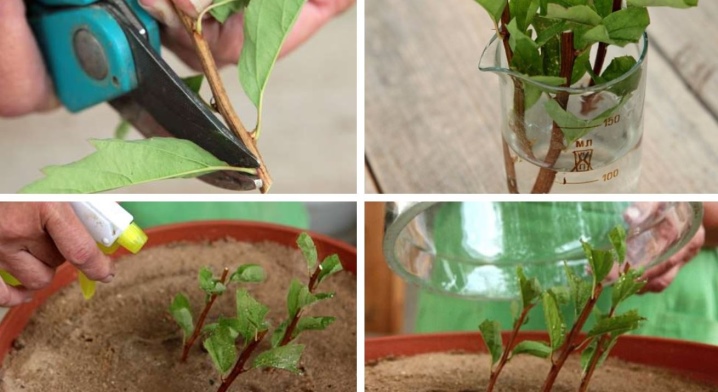
Growing spirea from seeds is least often used, mostly because they do not germinate well. In addition, for a plant grown in this way to bloom, you have to wait about 3 years.
Application in landscape design
Pink spirea is perfect for growing in the middle lane, has a moderate frost resistance, therefore it is often used to decorate the garden. The design options with this plant are varied:
- as a hedge from bushes with a height not higher than 70-80 cm;

- framing of artificial reservoirs, places for rest, garden paths, gazebos;
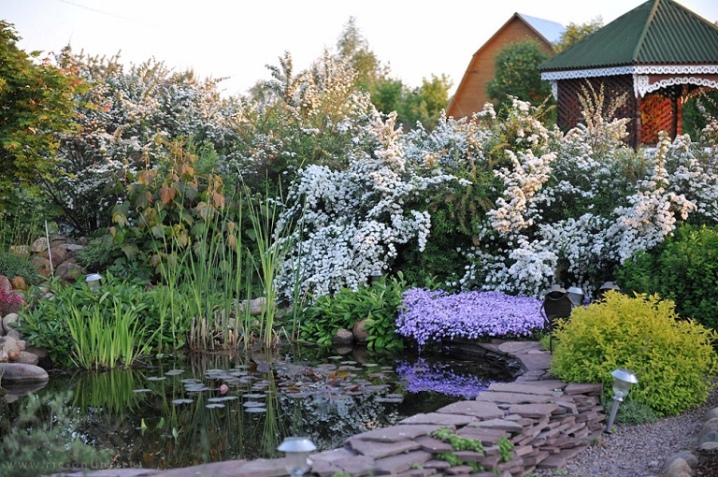
- low varieties are suitable for decorating green lawns in combination with coniferous shrubs and trees;
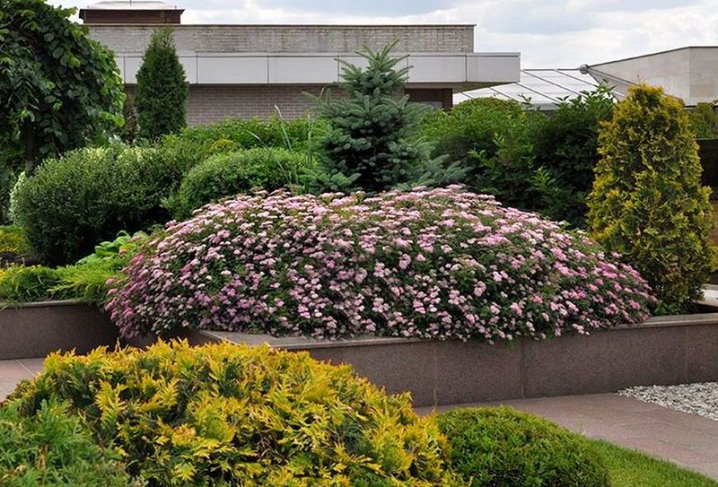
- spireas are beautifully combined with different types of deciduous shrubs, including hostu;
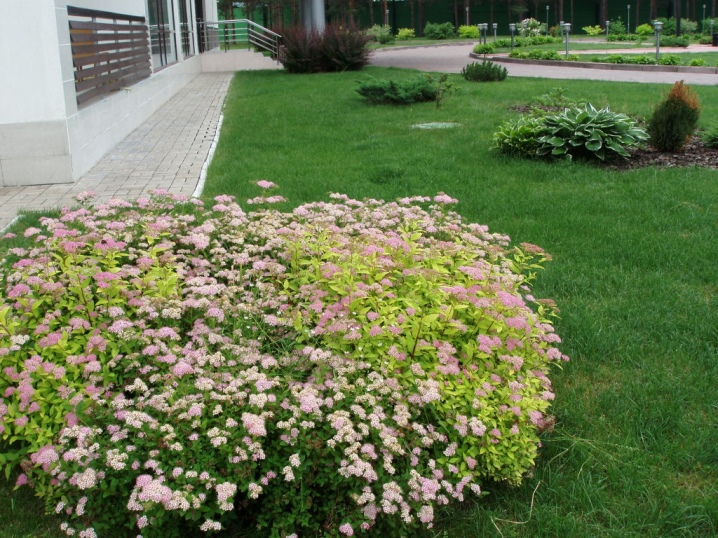
- the culture is perfect for decorating rocky gardens and alpine hills;
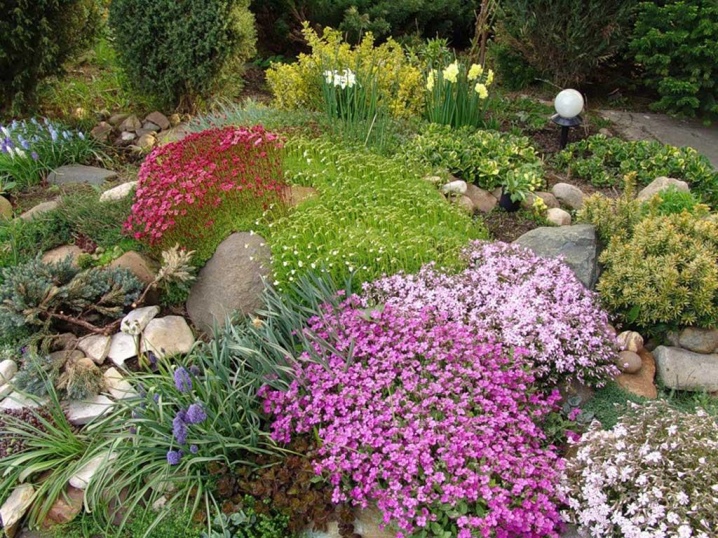
- dwarf species of spirea with a dense dense crown can be used for group planting along the paths.
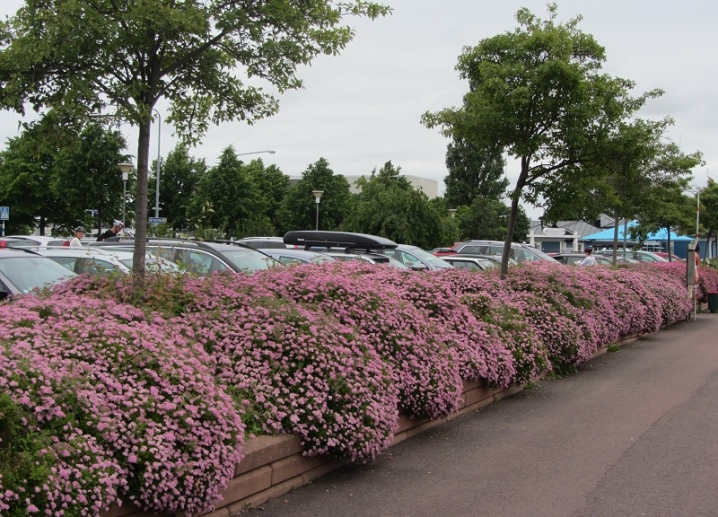
Different types of spirea are wonderfully combined with each other, with other flowers and garden crops, so that any original variations are possible that will make the atmosphere of the site unique.
See below for more details.



































































Class!
The comment was sent successfully.